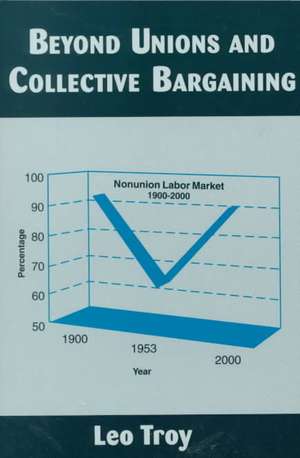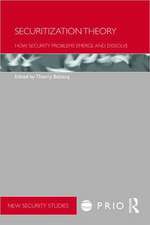Beyond Unions and Collective Bargaining
Autor Leo Troyen Limba Engleză Paperback – 31 ian 2000
| Toate formatele și edițiile | Preț | Express |
|---|---|---|
| Paperback (1) | 278.13 lei 6-8 săpt. | |
| Taylor & Francis – 31 ian 2000 | 278.13 lei 6-8 săpt. | |
| Hardback (1) | 669.94 lei 6-8 săpt. | |
| Taylor & Francis – 30 sep 1999 | 669.94 lei 6-8 săpt. |
Preț: 278.13 lei
Nou
Puncte Express: 417
Preț estimativ în valută:
53.23€ • 54.86$ • 44.94£
53.23€ • 54.86$ • 44.94£
Carte tipărită la comandă
Livrare economică 03-17 martie
Preluare comenzi: 021 569.72.76
Specificații
ISBN-13: 9780765604705
ISBN-10: 0765604701
Pagini: 256
Dimensiuni: 152 x 229 x 16 mm
Greutate: 0.45 kg
Ediția:1
Editura: Taylor & Francis
Colecția Routledge
Locul publicării:Oxford, United Kingdom
ISBN-10: 0765604701
Pagini: 256
Dimensiuni: 152 x 229 x 16 mm
Greutate: 0.45 kg
Ediția:1
Editura: Taylor & Francis
Colecția Routledge
Locul publicării:Oxford, United Kingdom
Cuprins
Chapter 1 A Competitive System of Labor Relations; Chapter 2 Setting the Stage for Individual Representation; Chapter 3 Why Contemporary Labor Relations Do Not Reprise the Pre–New Deal Era; Chapter 4 Preference of Workers and Management for the Individual System; Chapter 5 Employee Communication; Chapter 6 Conditions of Employment; Chapter 7 Is There a Third Way?; Chapter 8 The Organized and Individual Systems in the New Millennium; Chapter 9 Highlights and Summary;
Descriere
This study examines the transformation in the USA from an organized to a mainly private labour market. The author first discusses the manifold historical conditions that set the stage for the competitive non-union alternative and then asks what makes the non-union system work.















